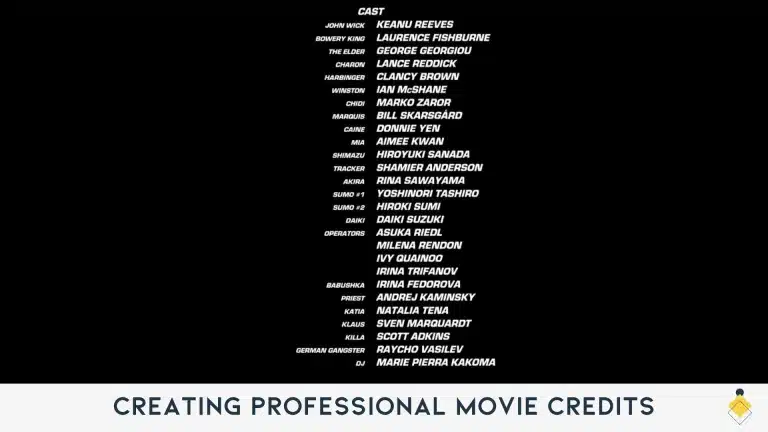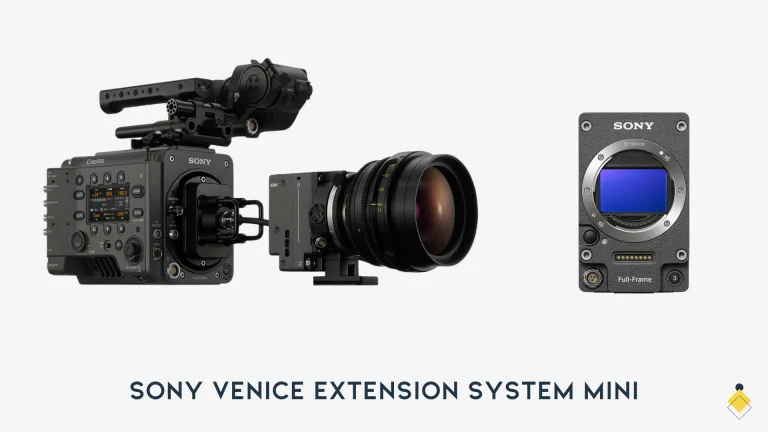Cinematography is an art form that plays a pivotal role in the world of filmmaking, bringing stories to life through the lens of a camera.
At the heart of this craft lies the cinematographer, often referred to as the Director of Photography (DP).
In this comprehensive guide, we will explore the multifaceted world of cinematography, the responsibilities of a cinematographer, and how they differ from a director. We’ll also get into the salaries of cinematographers, providing you with a well-rounded view of this captivating profession.
Let’s dive right into it!
Roles on a Movie Set
Before we dive into the world of cinematography, it’s crucial to understand the various roles on a movie set.
A film production is a collaborative effort involving a diverse group of professionals.
Here are some key roles you’ll encounter:
Director
The director is the visionary behind the film. They shape the narrative, guide the actors, and make creative decisions that impact every aspect of the production.
Producer
Producers oversee the logistical and financial aspects of filmmaking. They secure funding, hire key personnel, and ensure the project stays on track.
Screenwriter
The screenwriter creates the screenplay, the foundation upon which the film is built. They craft the story, dialogue, and characters.
Camera Operator
The camera operator operates the camera during filming, executing the cinematographer’s vision by framing shots and controlling the camera’s movements.
Editor
Editors assemble the footage into a cohesive narrative, fine-tuning the pacing and structure of the film.
Production Designer
Production designers are in charge of the film’s visual aesthetics. They create the sets, select props, and work on the overall look of the film.
Now, let’s focus on the central figure in our discussion: the cinematographer.
What Does a Cinematographer Do?

Defining Cinematography
Cinematography can be defined as the art and science of capturing moving images on film or digitally.
It involves making deliberate choices in lighting, camera movement, composition, and equipment to create a visual narrative that enhances the storytelling process.
The Cinematographer’s Responsibilities
Cinematographers have a wide range of responsibilities on a film set, and their role goes beyond merely operating the camera.
Here are some key tasks they perform:
1. Visualizing the Director’s Vision
At the core of a cinematographer’s role is translating the director’s creative vision into a visual language.
This involves a close collaboration with the director to understand the mood, tone, and overall aesthetics required for the film. Cinematographers need to grasp the essence of the story and determine how best to convey it visually.
2. Camera and Lighting Setup
Cinematographers are responsible for selecting the appropriate camera equipment and lenses that align with the film’s requirements.
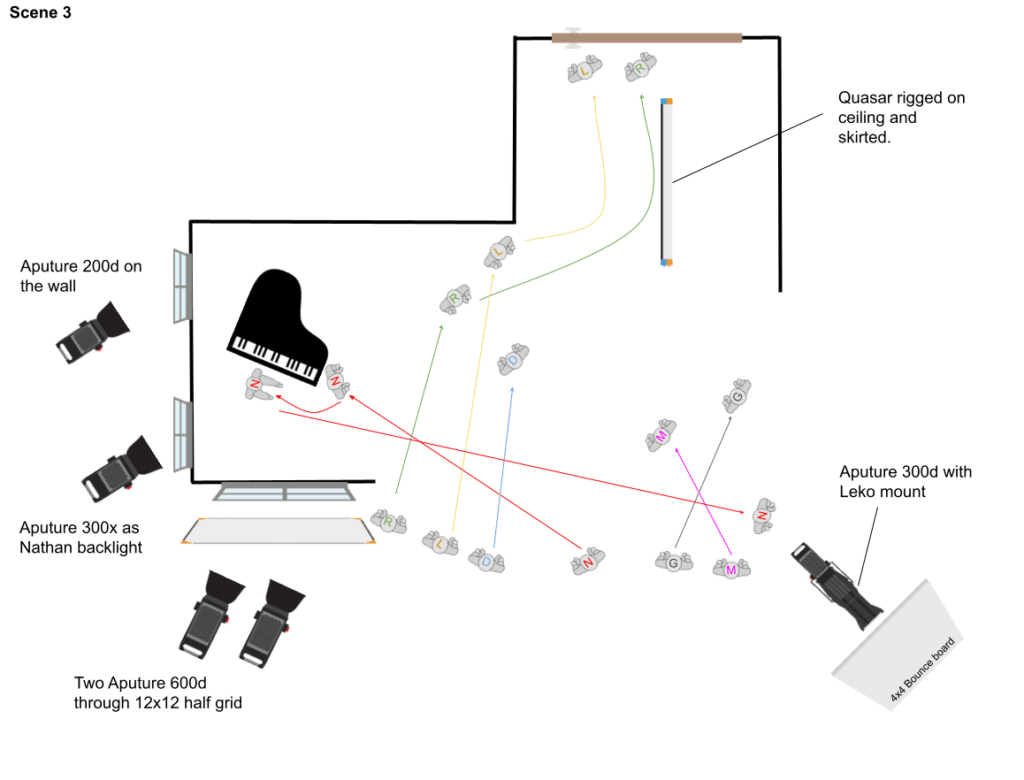
They also design the lighting scheme, a crucial aspect of cinematography. This process involves working with a team of electricians and grips to achieve the desired look for each scene.
Whether it’s creating a soft, romantic ambiance or a stark, dramatic setting, the cinematographer’s expertise in lighting is fundamental.
3. Shot Composition
Shot composition refers to how the elements within the frame are arranged.
Cinematographers make deliberate choices about camera angles, framing, and movement to convey emotions, tell the story effectively, and guide the audience’s attention. They decide when to use wide shots, close-ups, or unique camera movements to capture the essence of each scene.
4. Selecting Film Stock or Digital Settings

In the past, cinematographers chose film stock with specific characteristics to achieve a desired look. Today, in the digital age, they work with digital cameras and settings to create the same effect. This involves adjusting settings like ISO, shutter speed, and aperture to control exposure and image quality.
5. Managing the Camera Crew
Cinematographers oversee the camera crew, including camera operators and focus pullers. They ensure that shots are executed according to their vision and provide guidance on framing, focus, and camera movements during the shoot.

Effective communication within the team is essential to achieving the desired results.
6. Maintaining Consistency
Consistency in lighting, shot composition, and visual style is crucial in filmmaking. Cinematographers must ensure that the look and feel of the film remain consistent throughout, even when scenes are shot out of sequence. This consistency helps create a cohesive viewing experience for the audience.
7. Problem-Solving
Filmmaking often presents technical challenges, from shooting in adverse weather conditions to working in tight spaces. Cinematographers are skilled problem-solvers who adapt to these challenges, finding creative solutions to capture the required shots.
8. Post-Production Collaboration
Cinematographers continue to play a significant role in post-production. They work closely with editors and colorists to achieve the final look of the film. This includes color grading, where they fine-tune the colors and tones to enhance the visual narrative.

In essence, cinematographers are the architects of a film’s visual storytelling.
They use their expertise in camera work, lighting, and composition to evoke emotions, enhance the narrative, and create a captivating visual experience for the audience. It’s a role that demands both technical proficiency and artistic sensibility, making cinematographers indispensable contributors to the world of filmmaking.
Cinematographer vs. Director: What Sets Them Apart?
While the roles of a cinematographer and director overlap in many ways, they have distinct responsibilities and areas of expertise:
Cinematographer (Director of Photography)
- Focuses on the visual aspects of the film, such as lighting, composition, and camera work.
- Collaborates closely with the director to achieve the desired visual style.
- Manages the camera crew and oversees technical aspects of cinematography.
- Works on achieving the director’s vision through visuals.
Director
- Shapes the overall narrative and storytelling.
- Guides actors in their performances.
- Makes creative decisions that impact every aspect of the film, from script to editing.
- Collaborates with the cinematographer to achieve the visual style but primarily focuses on the storytelling aspect.
In essence, the director is the captain of the ship, steering the film’s narrative, while the cinematographer is the visual architect, bringing the director’s vision to life through camera work and lighting.
Cinematography Salary: How Much Does a Cinematographer Make?
The salary of a cinematographer can vary significantly based on several factors, including experience, location, and the scale of the production. Here’s a general overview of cinematography salaries:
- Entry-Level: Entry-level cinematographers or those working on small independent projects may earn around $40,000 to $60,000 per year.
- Mid-Career: Cinematographers with several years of experience and a strong portfolio can earn between $60,000 to $100,000 annually.
- Experienced Professionals: Highly experienced cinematographers, especially those working on big-budget films or television series, can command salaries exceeding $100,000 per year, sometimes reaching into the millions.
- Location Matters: Salary can also vary significantly depending on the location of the production. Cinematographers working in major film hubs like Los Angeles or New York often earn more than those in smaller markets.
- Union Rates: In some cases, cinematographers who are members of a cinematographers’ union, such as the International Cinematographers Guild (ICG), may earn higher salaries with additional benefits.
It’s worth noting that cinematographers often negotiate their fees on a project-by-project basis, and their reputation and portfolio can have a significant impact on their earning potential.
Famous Cinematographers: Masters of Their Craft
Throughout the history of cinema, several cinematographers have left an indelible mark on the industry. Their exceptional work has not only enhanced the visual storytelling in films but has also inspired countless aspiring cinematographers. Here are a few famous cinematographers worth mentioning:
Roger Deakins
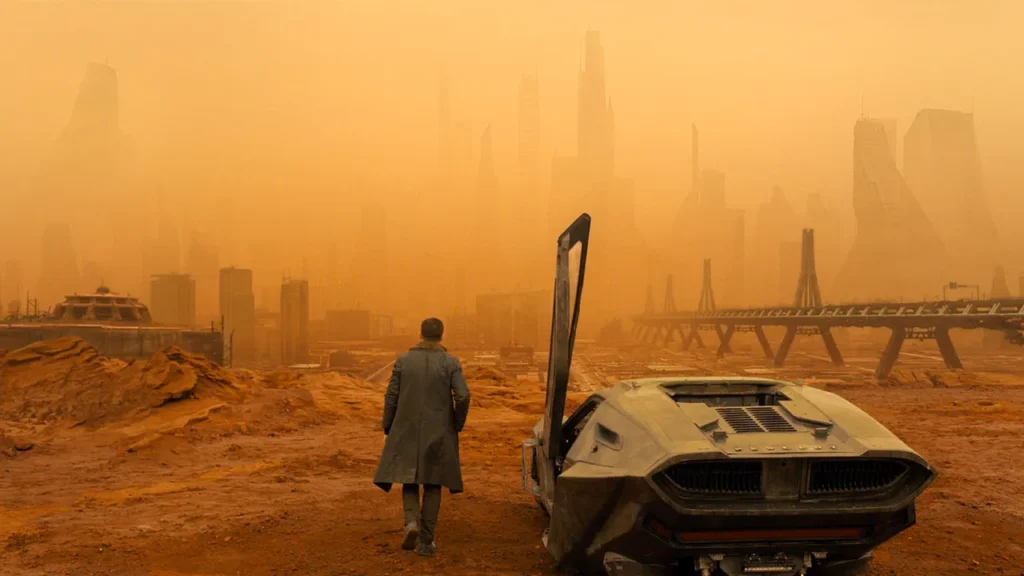
Roger Deakins, known for his meticulous craftsmanship, has worked on films like “Blade Runner 2049” and “No Country for Old Men.” He has received numerous awards, including multiple Academy Awards for Best Cinematography.
Emmanuel Lubezki
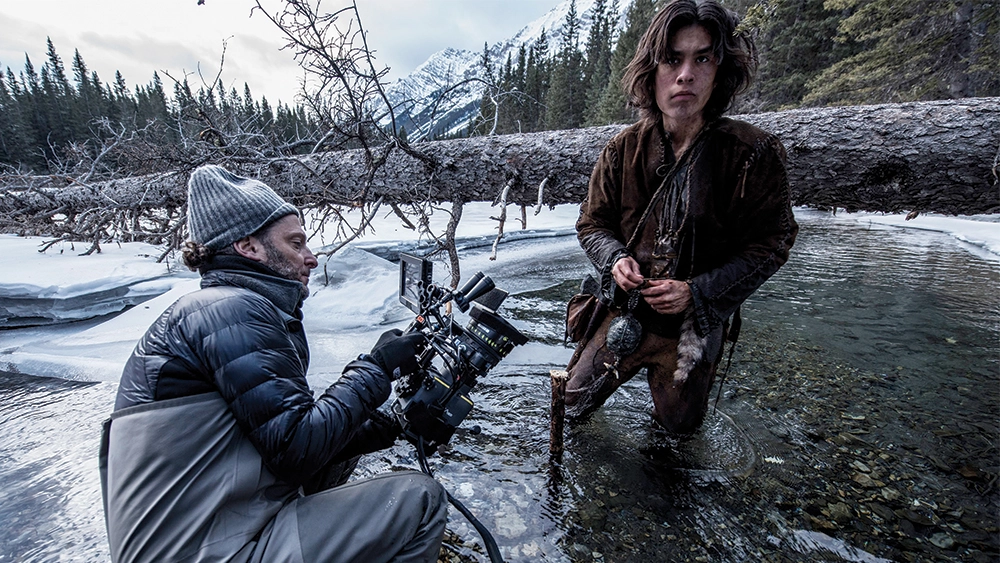
Emmanuel Lubezki, also known as “Chivo,” is celebrated for his long takes and naturalistic lighting. His work on films like “Birdman” and “The Revenant” earned him three consecutive Academy Awards for Best Cinematography.
Gordon Willis
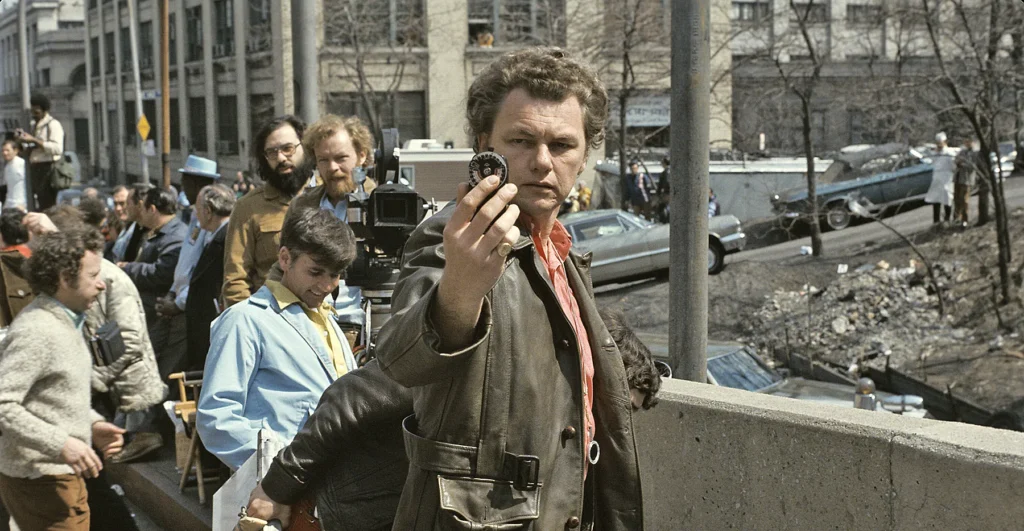
Gordon Willis, known as the “Prince of Darkness,” was a pioneer in cinematography. His work on “The Godfather” trilogy and “Annie Hall” helped redefine the visual language of cinema.
Elements of Cinematography: Crafting Visual Stories
Cinematography involves a blend of technical expertise and artistic sensibility. Here are some key elements that cinematographers consider when crafting visual stories:
Lighting
Lighting is a fundamental aspect of cinematography. Cinematographers use various lighting techniques to set the mood, highlight characters, and create depth and texture in scenes.
Composition
Composition refers to how elements are arranged within the frame. Cinematographers use principles of composition to guide the viewer’s eye and convey meaning.
Camera Movement
Camera movement, whether it’s a static shot, a tracking shot, or a crane shot, influences how the audience perceives the action. Cinematographers choose movements that align with the storytelling.
Color Palette
The choice of colors in a film can evoke emotions and enhance the narrative. Cinematographers work with production designers and colorists to create a harmonious color palette.
Aspect Ratio
The aspect ratio, or the dimensions of the frame, can impact the visual style. Cinematographers select the aspect ratio that best suits the story.
Conclusion
Cinematographers play a pivotal role in the world of filmmaking, using their expertise in cinematography to bring stories to life through visual storytelling.
Their responsibilities encompass everything from visualizing the director’s vision to managing camera crews and ensuring consistency in the visual elements of a film. While the roles of a cinematographer and director may overlap, they each have their distinct areas of expertise.
Cinematography is a dynamic and evolving field that combines technical know-how with artistic creativity.
Remember that a cinematographer is different from a videographer!
Whether you aspire to become a cinematographer or simply appreciate the art of filmmaking, understanding the role of the cinematographer is essential to fully appreciate the magic that happens behind the camera.
FAQs: Cinematographer
A cinematographer, also known as a Director of Photography (DP), is responsible for capturing the visual elements of a film. They work closely with the director to translate the creative vision into camera work, lighting, and shot composition.
An underwater cinematographer specializes in capturing footage beneath the water’s surface. They use specialized equipment and techniques to shoot underwater scenes for documentaries, films, or other visual media.
Cinematographers’ salaries vary widely based on factors like experience, location, and project scale. Experienced cinematographers working on major productions can earn substantial incomes, while entry-level cinematographers may earn more modest salaries.
A female cameraman is often simply referred to as a “cameraperson” or “camera operator.” The term applies regardless of gender and focuses on their role in operating the camera.
The four primary roles of a cinematographer are:
– Visualizing the director’s vision.
– Managing camera and lighting setup.
– Crafting shot composition.
– Selecting film stock or digital settings.


